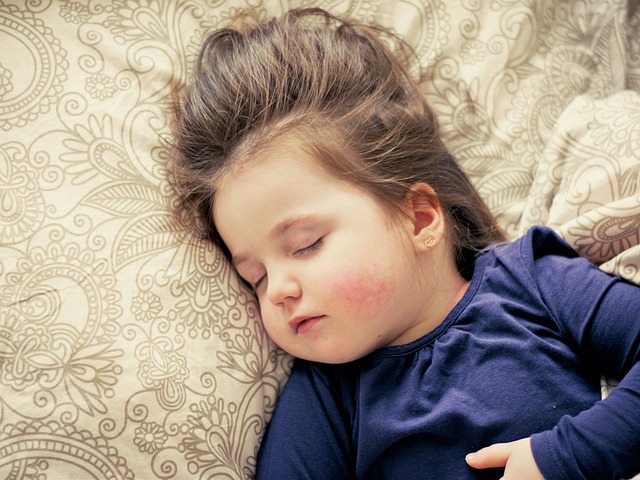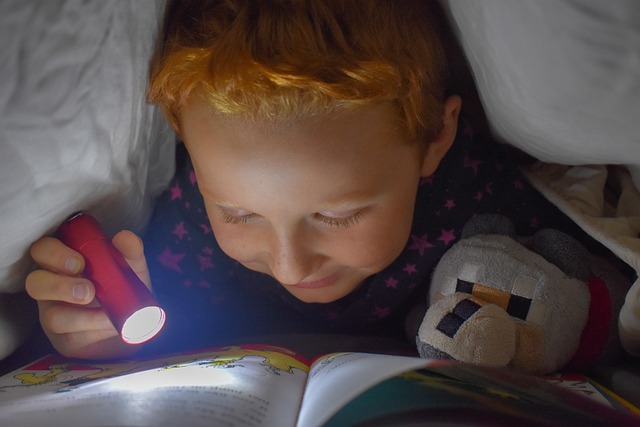A large Danish study called The effects of Covid-19 related policies on neurocognitive face processing in the first four years of life was recently published in Developmental Cognitive Neuroscience.
The study authored by Carlijn van den Boomen, Anna C. Praat, Caroline M.M. Junge, and Chantal Kemner investigated the effects of Covid-19 related measures on two facets of face processing in children aged 5 months to 3 years:
- Face categorization (differentiating between faces and houses)
- Emotional face processing (differentiating between happy, fearful, and neutral facial expressions of emotion)
Their research showed that babies and toddlers who grew up during the pandemic struggled to differentiate between happy and fearful facial expressions of emotion.
The children studied showed a marked difficulty in processing happy facial expressions, which the researchers believe was due to the limited variety of face-to-face interactions during the pandemic.
Background
The researchers wanted to study whether social restrictions introduced during the pandemic, such as reduced in-person interactions and widespread mask-wearing, may have shaped early brain development.
Studies have shown that infants are sensitive to emotions expressed through facial expressions since their first year of birth. In fact, a study published in PLOS ONE, suggests that fetuses even practice their own facial expressions while in utero!
The team wanted to know:
- Whether a reduced variety of facial exposure might influence how children process faces and how quickly they do so.
- Whether children can distinguish between different facial expressions of emotion (known as emotional face processing).
The Methodology
To investigate the questions above, the researchers used electroencephalography (EEG) to measure brain activity in over 900 children aged 5 months, 10 months, and 3 years.
462 children were tested before the onset of the pandemic, while 473 others were tested between March 2020 and April 2022 when COVID-19-related isolation and mask wearing policies were in place.
By testing the children at these different time periods, this allowed researchers to compare brain responses in children who had typical social exposure to those whose early years were shaped by limited social interactions and more frequent mask use in adults.
In the first part of the study, children passively viewed a series of images that included neutral faces, faces showing the facial expression of happiness, faces showing the facial expression of fear, and houses.
EEG recordings focused on event-related potentials (ERPs), patterns of electrical activity that occur in response to specific stimuli. The researchers analyzed three well-known ERP components linked to face processing.
The Results
1. Faster Face Processing
 When it came to how quickly the brain responded to faces, the researchers found no meaningful differences in 5 or 10-month-old infants between those tested before and during the pandemic.
When it came to how quickly the brain responded to faces, the researchers found no meaningful differences in 5 or 10-month-old infants between those tested before and during the pandemic.
However, in three-year-olds, there was a notable difference.
Young children tested during the pandemic showed earlier responses to faces than their pre-pandemic counterparts, indicating faster neural processing of facial information.
The finding of faster face processing was somewhat unexpected.
In typical development, the speed at which the brain processes faces increases with age and experience.
However, some previous research in adults has shown that reduced facial information — such as when faces are masked — can lead to quicker processing.
2. Face Categorization
In contrast, the ability to tell the difference between faces and non-facial objects, known as face categorization, appeared unaffected by the pandemic.
Across all age groups, children tested before and during the pandemic showed similar patterns of brain activity when viewing faces versus houses.
This suggests that this fundamental aspect of face processing is resilient and may not depend as strongly on a wide range of facial experiences.
3. Reduced Differentiation of Emotional Expressions
 One of the most striking findings emerged when the researchers examined how children responded to emotional expressions.
One of the most striking findings emerged when the researchers examined how children responded to emotional expressions.
Children tested before the pandemic showed distinct patterns of brain activity when viewing happy, fearful, and neutral faces. But among those tested during the pandemic, this differentiation was reduced or absent.
In both ten-month-olds and three-year-olds, brain responses to happy and fearful faces became less distinguishable, especially in the later ERP components, which are thought to reflect attention or familiarity.
These differences were particularly driven by a reduced neural response to happy faces.
While children in the pre-pandemic group showed stronger brain responses to happy expressions, those tested during the pandemic had weaker responses.
This pattern suggests that happy faces were either less familiar or attracted less attention in the post-pandemic group.
Explanations
- The researchers propose several possible explanations for their findings:
- The variety of happy expressions that children saw may have decreased during the pandemic, due to both mask-wearing and the emotional toll experienced by caregivers.
- If children saw fewer smiling faces, their brains may have become less attuned to recognizing and reacting to them.
The brain’s emotional face processing system is known to be shaped by experience, especially during early development.
Just as infants need to see a variety of faces to build a robust mental representation of them, they may also need a range of emotional expressions to learn how to distinguish them.
Consequences
This study is significant not only for parents but also for policymakers, as it demonstrates the broader societal impacts of pandemic-era policies.
Facial expressions of emotion are important cues in social and cognitive learning. As such, the limited processing of such cues can have far-reaching consequences for the further development of children.
This is important to know for policy makers, and for parents of and individuals working with children that were 0-4 years old during the pandemic.
Moreover, this insight could also benefit children born in non-pandemic times children, as they benefit from a variety of social experiences as well.
Limitations
The study does come with some limitations.
While the researchers inferred that children tested during the pandemic had reduced facial input, they did not measure the exact nature or frequency of children’s social interactions.
Researchers suggest it’s possible that some families maintained relatively typical social environments, while others experienced more extreme isolation.
Other factors, such as parental stress, mental health, and daycare attendance, may also have influenced the outcomes.
Additionally, while brain activity patterns were measured, the study did not assess behavioral responses, such as whether children could label or respond appropriately to different facial expressions.
Dr. Matsumoto’s Thoughts
 The results of this study are not surprising, given the growing number of studies demonstrating the negative and somewhat deleterious effects of the use of masks on facial emotional expression recognition and identification in young children.
The results of this study are not surprising, given the growing number of studies demonstrating the negative and somewhat deleterious effects of the use of masks on facial emotional expression recognition and identification in young children.
These negative effects are expected, given the importance of the exposure of the emotional expressions of others in human (and nonhuman) socio-emotional development.
These findings also dovetail with the many deleterious effects of the lack of play with others in childhood over the past several decades. Play with others is incredibly important for learning valuable skills, including problem solving, self- and emotional-regulation, communication, dispute resolution, and many others.
All of these skills are also vitally important in adulthood as well; and learning to read other’s facial expressions of emotion lays at the core of many of these skills.
These emotional detriments that have occurred because of the decrease in play and especially masking during the Covid pandemic may have serious effects for years to come.
Yet, we can all do something to self-correct, which would involve making greater efforts to allow our kids to interact with others, play outside, and deal with problems on their own, all of which can be facilitated by making sure our children learn to read facial expressions of emotion.
The post Pandemic Kids Struggle to Recognize Happy and Fearful Faces first appeared on Humintell | Master the Art of Reading Body Language.

 Researchers analyzed sleep and behavior data of 143 six-year-olds, mothers of whom were trained about responsive parenting in the first 2.5 years following birth.
Researchers analyzed sleep and behavior data of 143 six-year-olds, mothers of whom were trained about responsive parenting in the first 2.5 years following birth. The results showed that the more a child’s bedtime changed each night, the worse they regulated their behavior and emotions.
The results showed that the more a child’s bedtime changed each night, the worse they regulated their behavior and emotions.